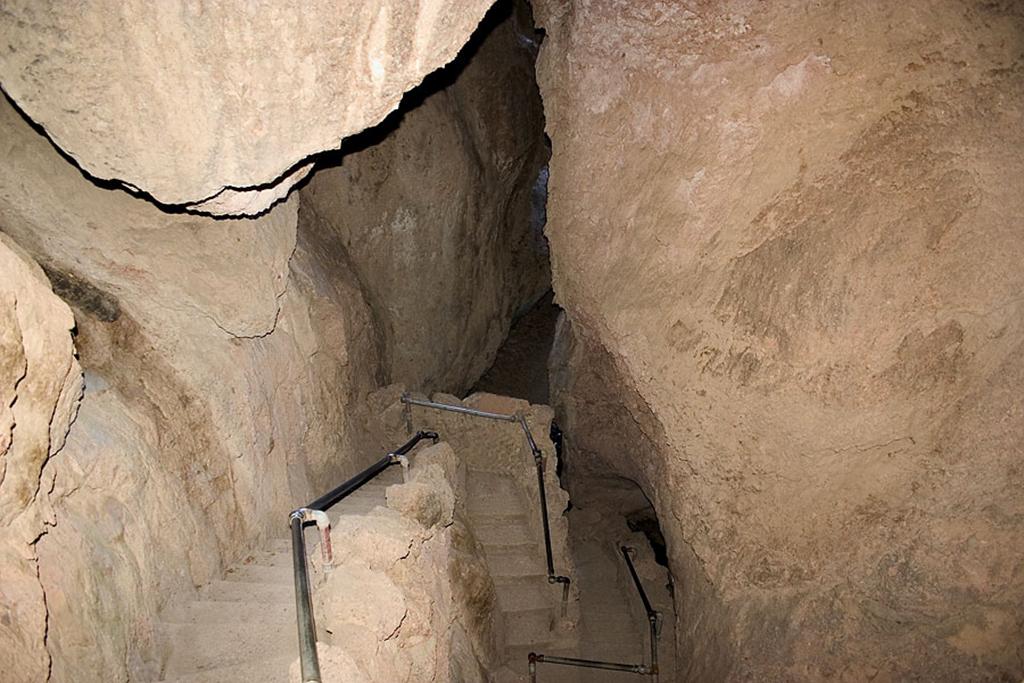The National Park System is home to several cave-centric parks: Mammoth Cave, Carlsbad Cavens, and Wind Cave national parks, to name a few. While the caves in these parks may have formed via slightly different mechanisms, they all have something in common: limestone. The talus caves of Pinnacles National Park, in California however, are not limestone and did not form via the chemical process of limestone dissolution by acidic water.

Bear Gulch Cave Trail, Pinnacles National Park / NPS file
The caves of Pinnacles formed by mechanical processes. Faults and fractures in the park’s volcanic rock loosened massive boulders which fell into canyons, stacking and wedging themselves tightly together. These falling boulders left gaps between the canyon floors and the tops of those wedged boulders, which form the ceilings of today’s caves.
Could some of these talus caves hold archaeological evidence of past Native people habitation? Maybe. While there is no current documented evidence of Native American inhabitants, archaeologists continue to explore these caves and might find proof of habitation someday.
According to park staff:
Non-Native legends suggest that the caves were once used as a hideout by the infamous bandit Tiburcio Vasquez, who was active in central California during the 19th century and was ultimately captured and hanged in San Jose in 1875.
Of course, these are just stories, but who knows?
If you are looking for evidence of real cave inhabitants, look no further than the park’s 14 bat species, some of which live within the talus caves.
According to park staff:
Currently, Pinnacles is home to a colony of Townsend's big-eared bats located in the Bear Gulch Cave and a colony of western mastiff bats inhabiting the Balconies cave area. These colonies are important indicators of the park’s ecological health, as bats rely on specific habitats for roosting and breeding.
So, what’s to keep those wedged boulders from falling on your head? This depends upon how well these boulders are locked in place by the smaller particles of sand and gravel lodged into cracks and crevices between those boulders to keep them stable and unmoving.
Like everything else, Pinnacles’ talus caves are in a constant state of change. Water flowing through the caves erodes the smaller particles holding the larger rocks in place. This in turn alters the cave’s structure. Maybe the caves will shift only slightly, or maybe there will be a very large rockfall reshaping (or eliminating) that entire cave opening. The chance of a talus cave restructuring itself to the point of inaccessibility is slim, but never zero.

A dripping waterfall at Bear Gulch talus cave, Pinnacles National Park / Paul G. Johnson via NPS
Where can you see and explore these talus caves? While the park is home to scattered smaller talus caves, the two largest concentrations of caves are:
- Bear Gulch Caves: Situated near the park headquarters in the East District.
- Balconies Caves: Found near the Chaparral Picnic Area in the West District.
Fortunately park visitors do not need rock climbing skills. In the 1930s, the Civilian Conservation Corps (CCC) constructed trails through the talus caves, making them accessible to visitors without the need for ropes or ladders.
Before heading out to visit one of these caves, however, it’s a good idea to check the park’s alerts and current conditions page for any cave closures and updates.





